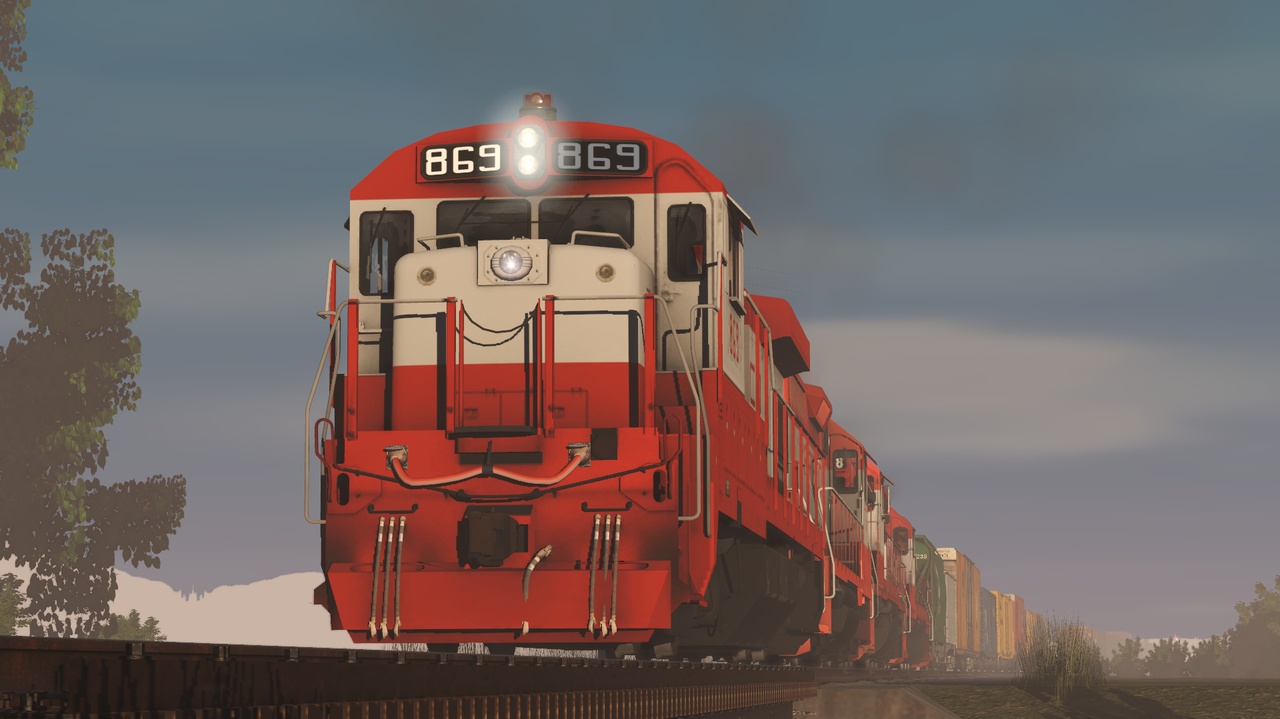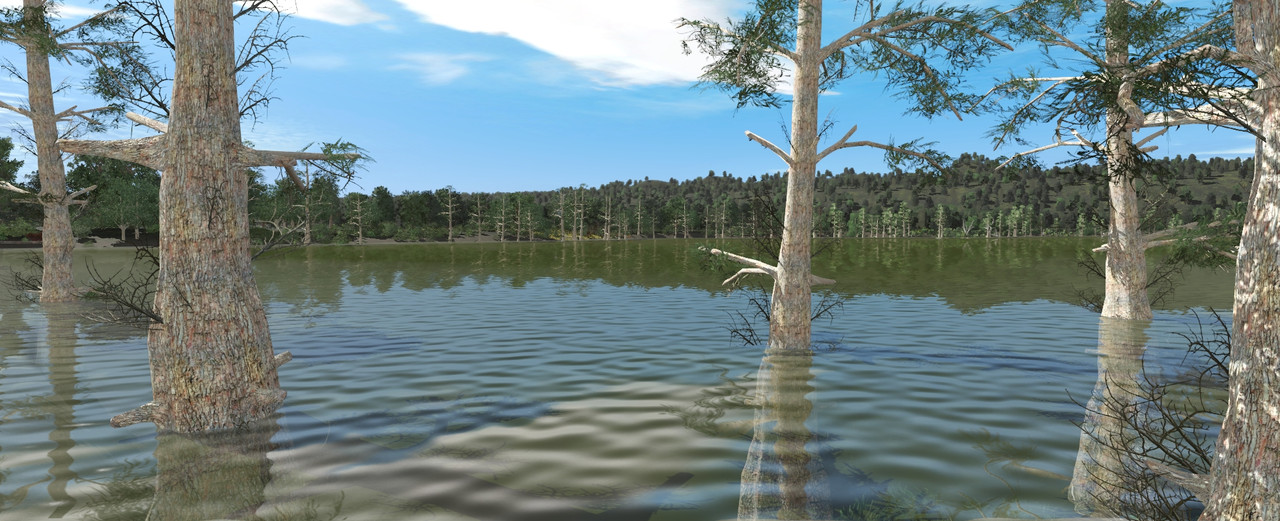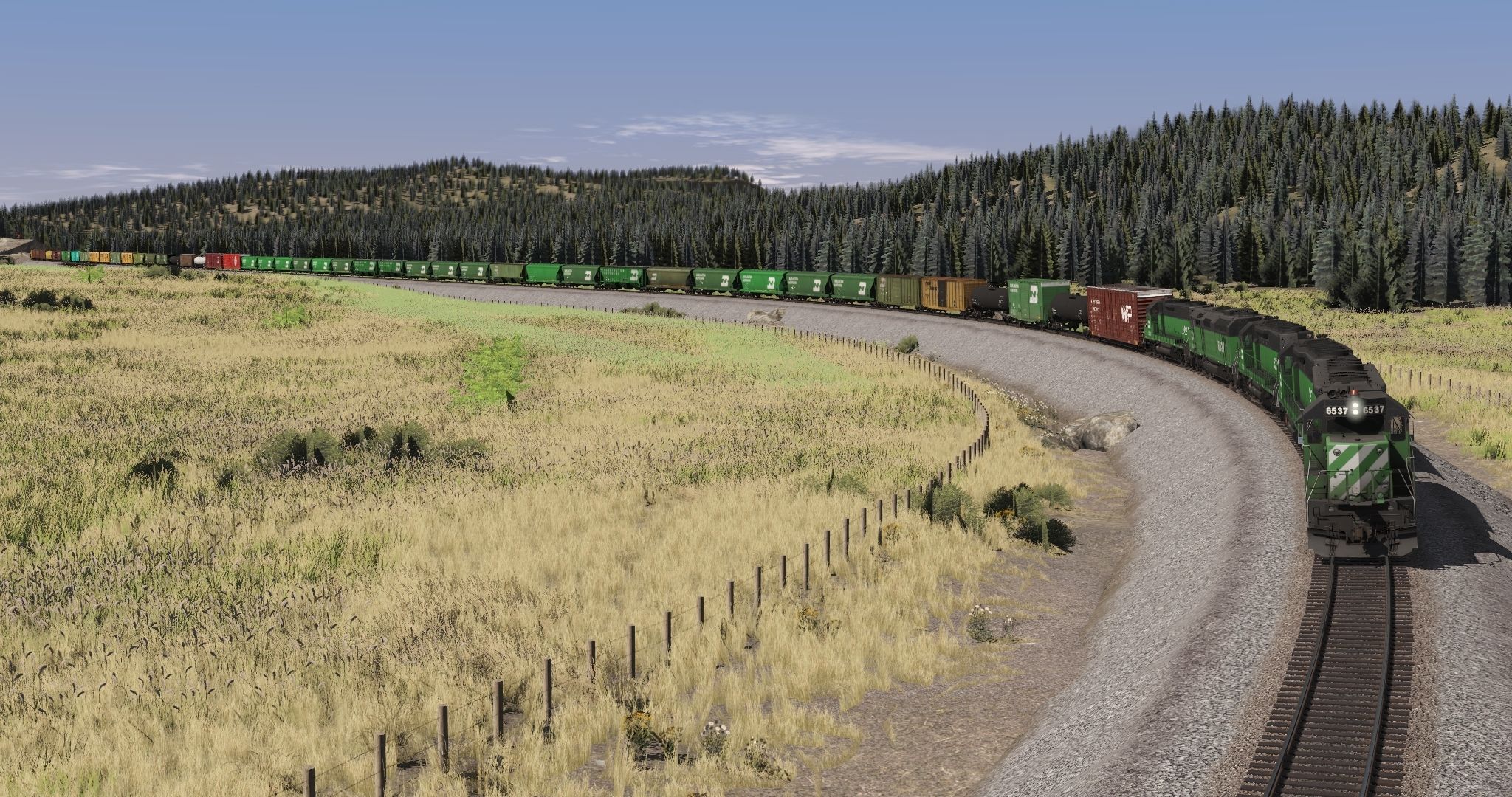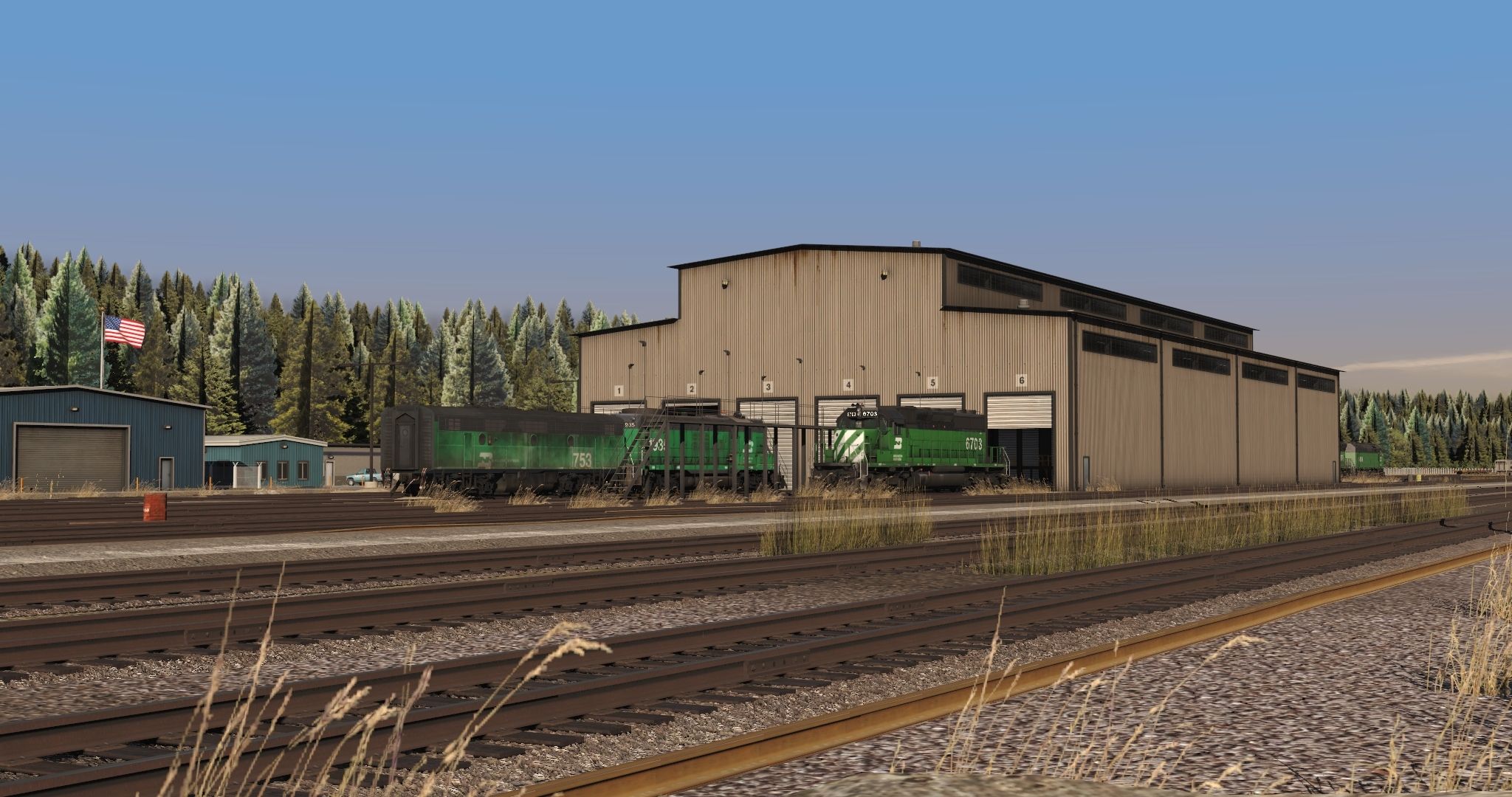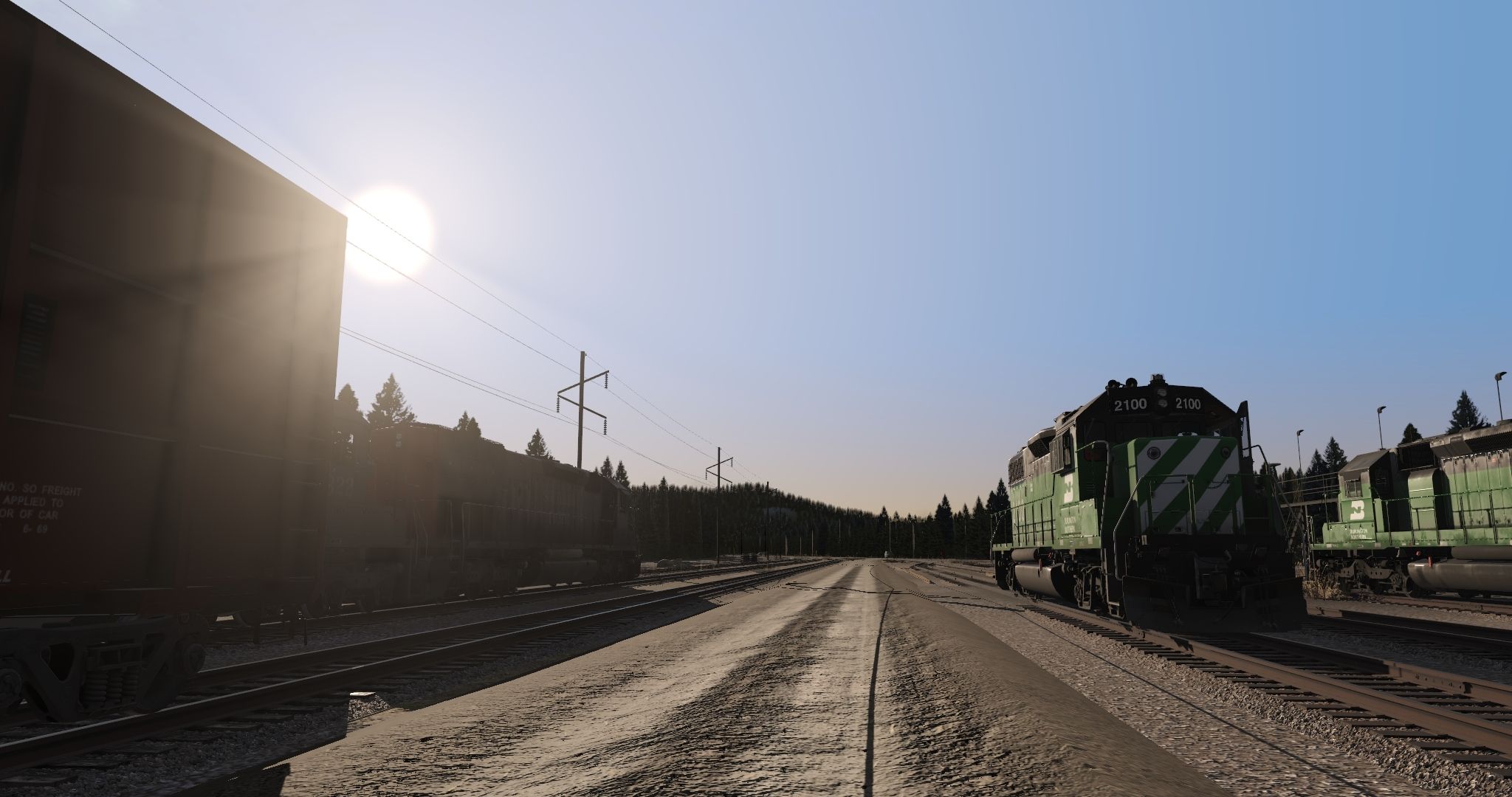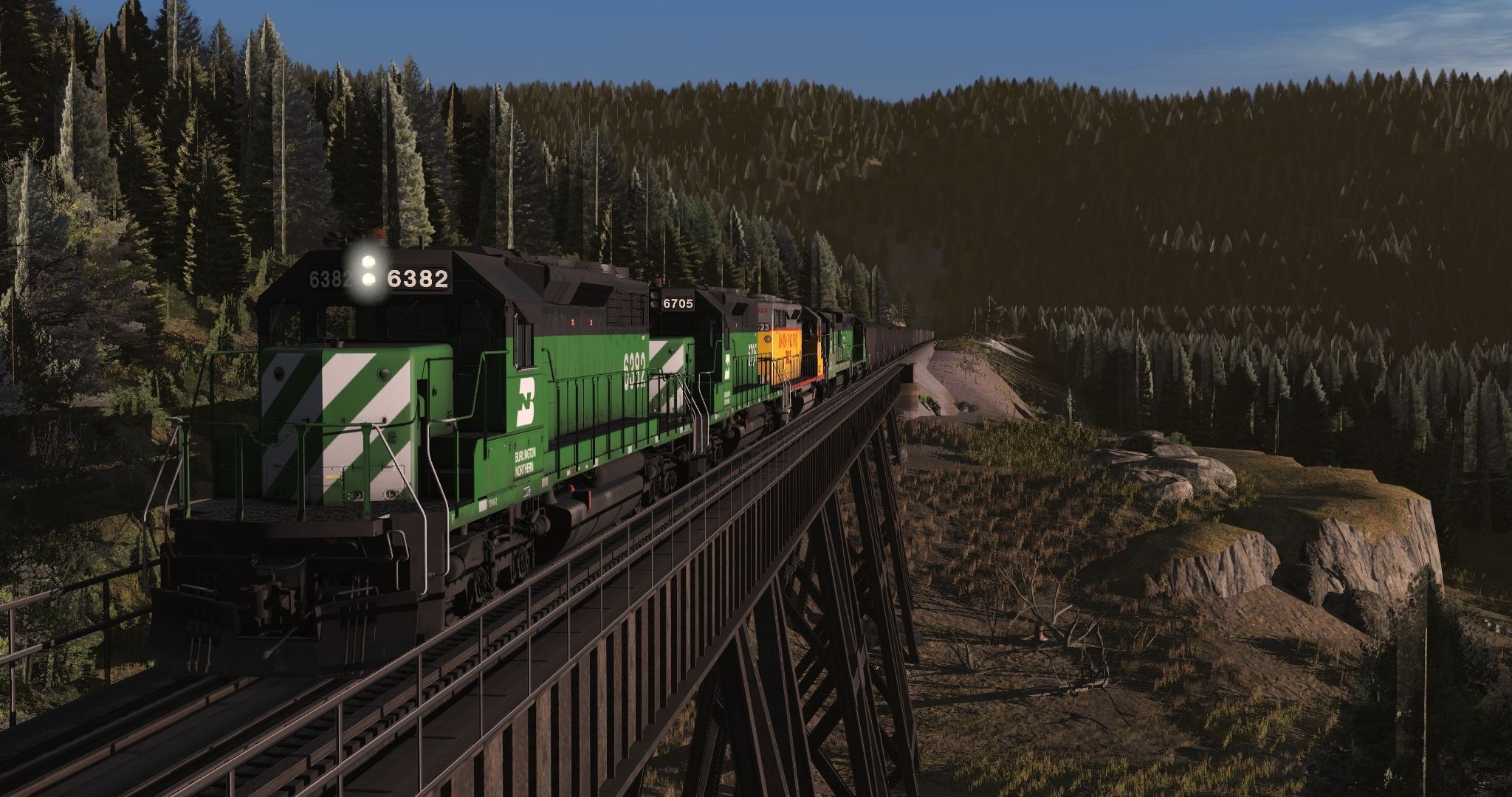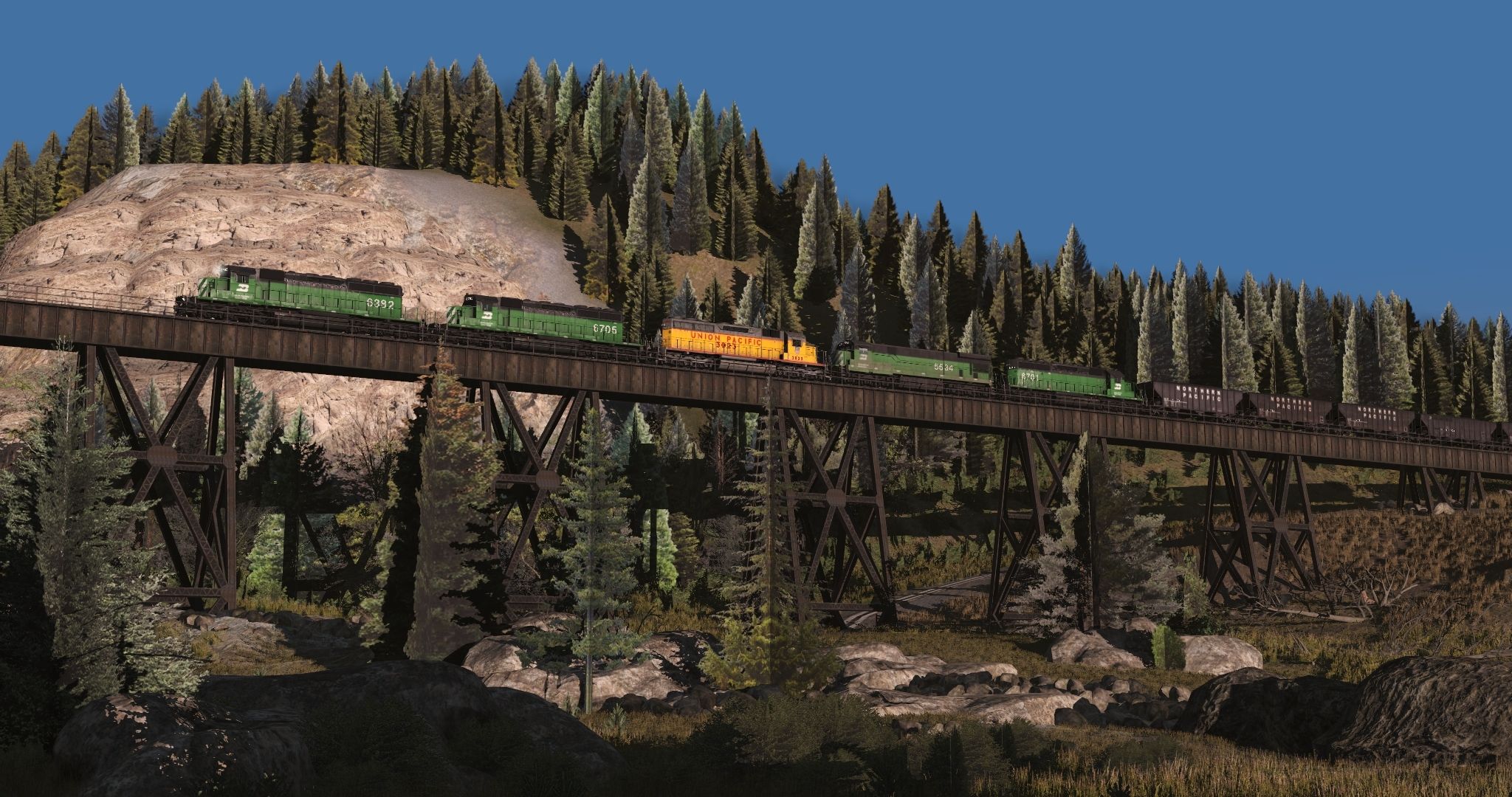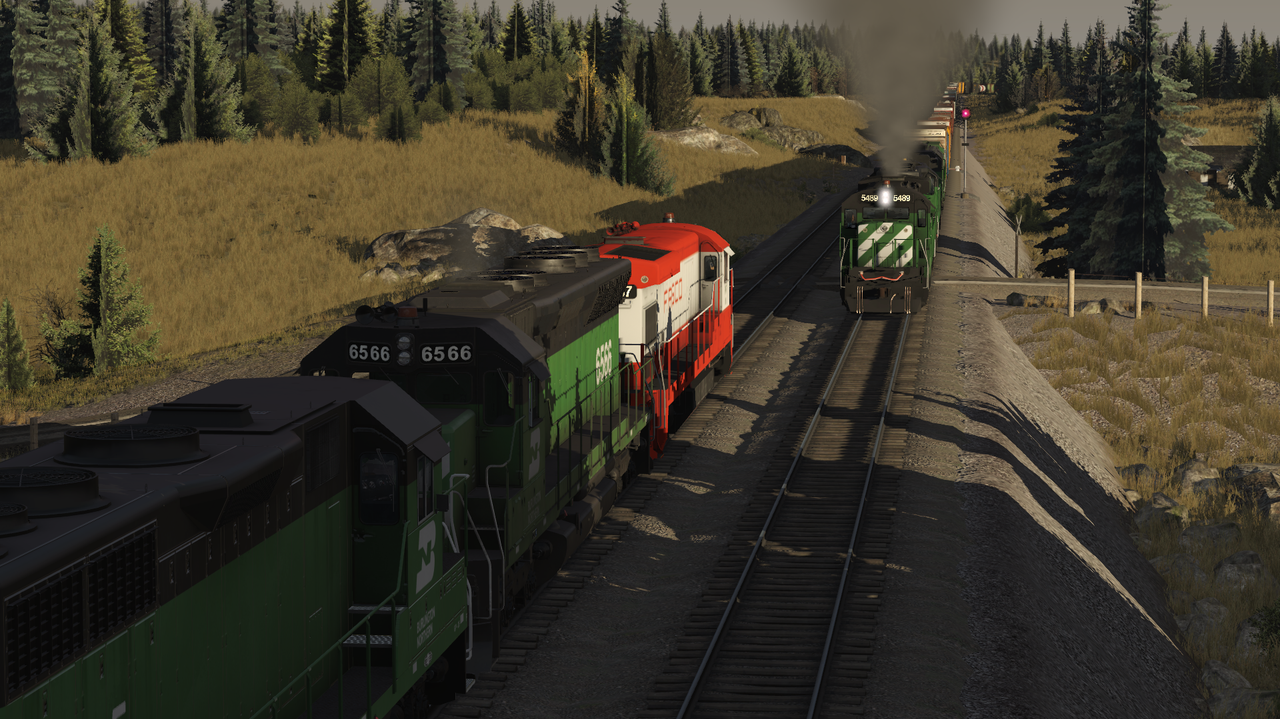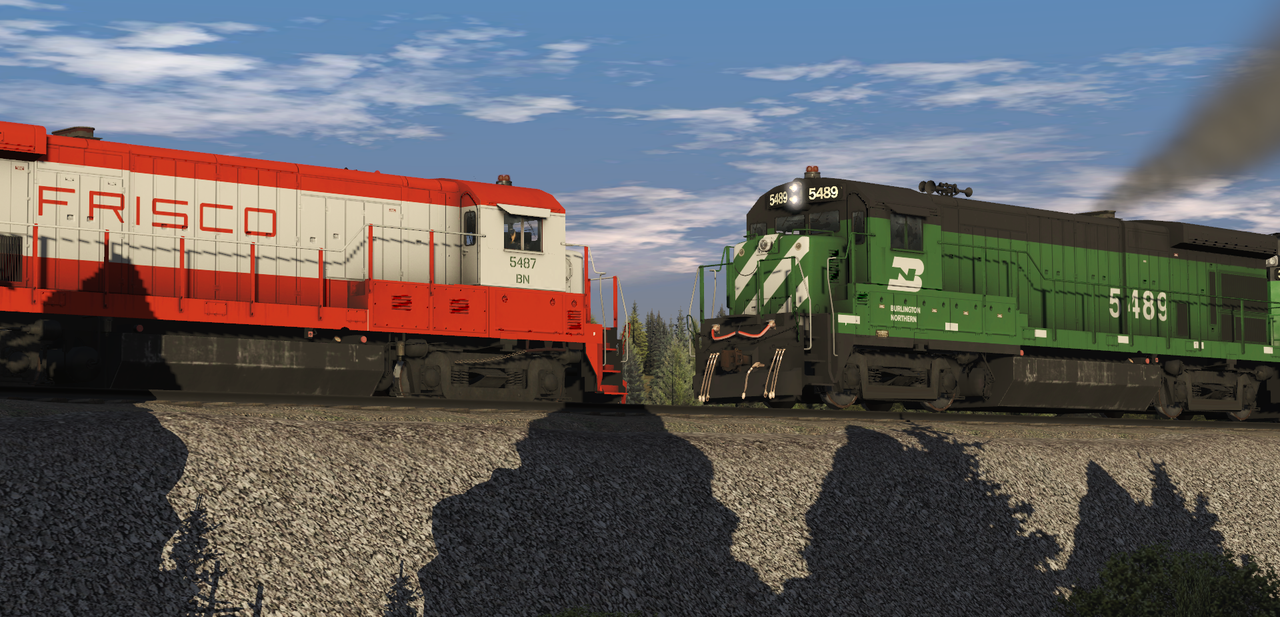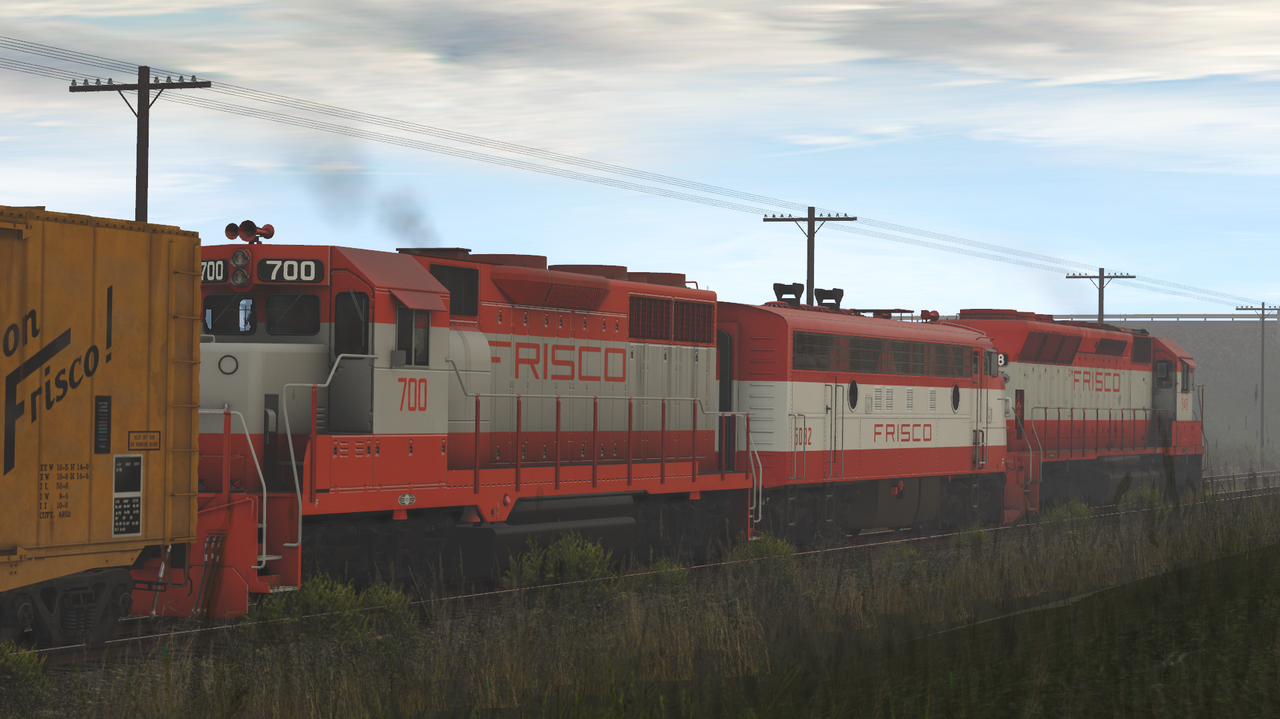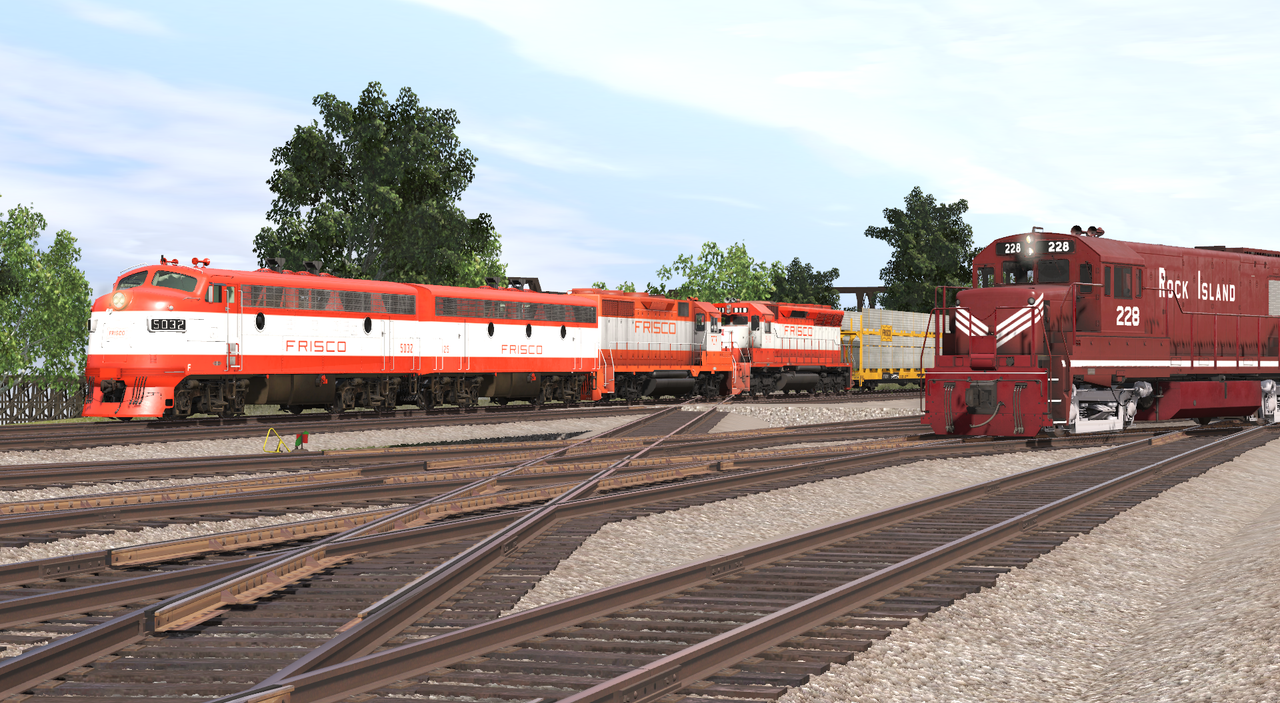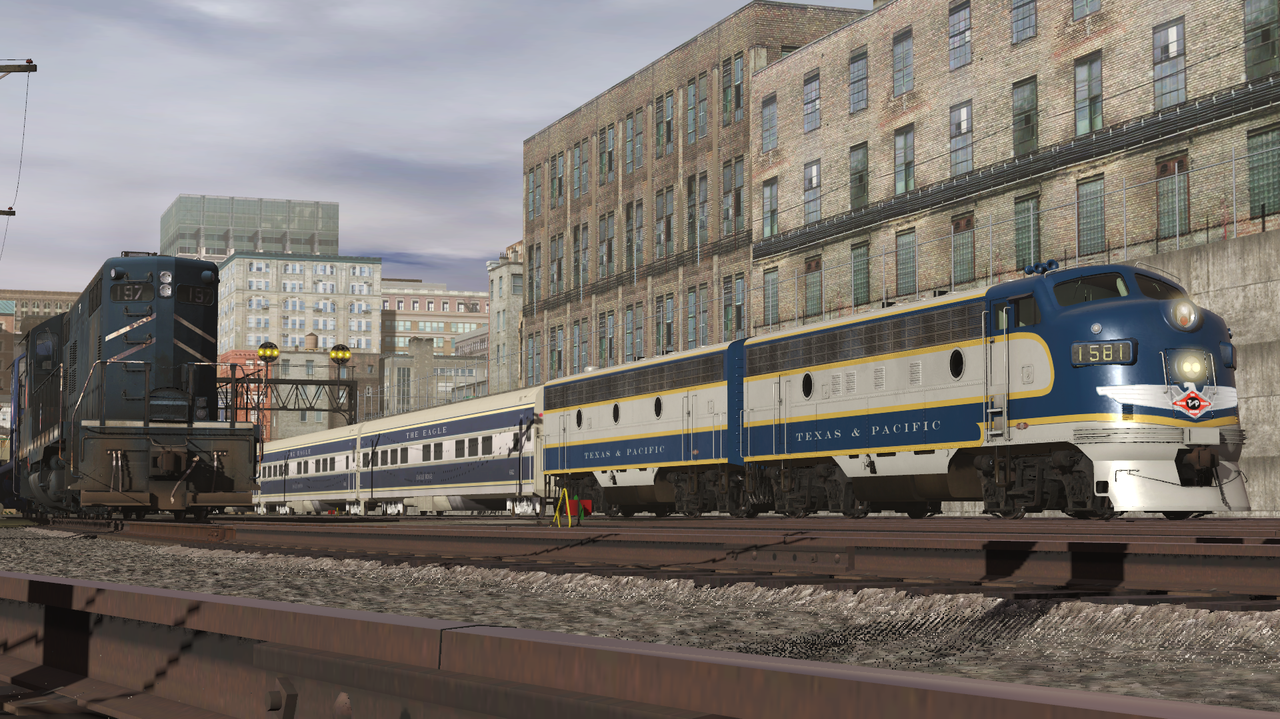Install the app
How to install the app on iOS
Follow along with the video below to see how to install our site as a web app on your home screen.
Note: This feature may not be available in some browsers.
You are using an out of date browser. It may not display this or other websites correctly.
You should upgrade or use an alternative browser.
You should upgrade or use an alternative browser.
USA Pics
- Thread starter Dermmy
- Start date
Michaeleba
Member
Who make the bridge?Train Watching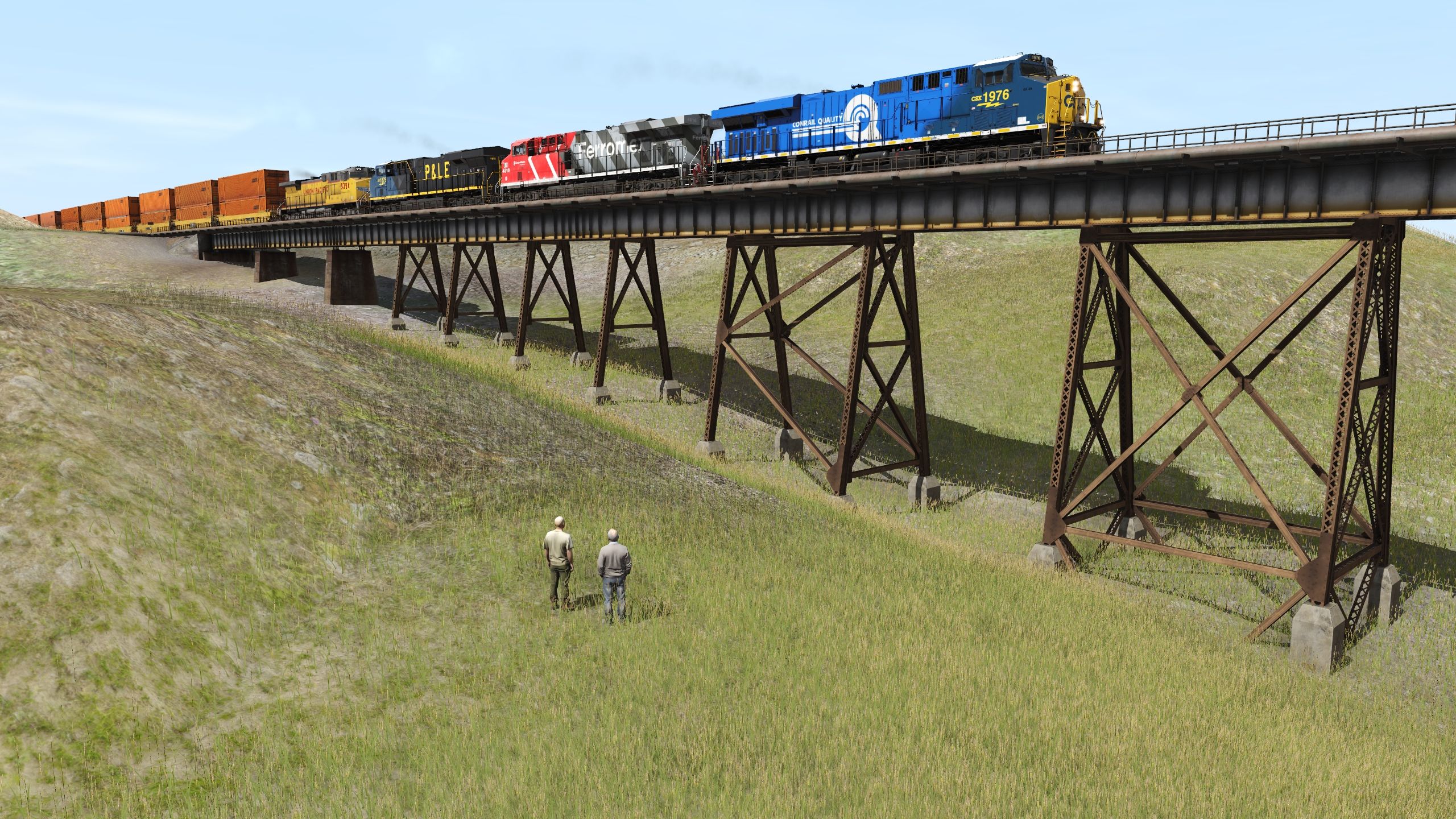
Something a little more fresh finally as I clean up and redo some fictional RR lore and routing etc - been in the queue for a while, finally branching out a few new ideas... and routes! Not that any will ever go far in the completion department, just for kicks really.
Eastbound trailers pass CP Bricker and its intact interlocking tower on this portion of the recently purchased Panhandle Route (aka Weirton Secondary under Conrail). The Silverlines had shared ownership of the tracks between Columbus and Newark, and following the creation of Conrail, they made a bid to the new government entity for a takeover of the rest of those rights and the rest of the route into Mingo Junction. It was accepted in 1977, clearing a much quicker path for traffic onto the railroads former W&LE, P&WV, and WM lines that led to Pittsburgh and eventually Baltimore. It proved to be a sound investment, and indeed more money was shoveled into upgrading and repairing the line as higher priority traffic arrived in the following months.

Although already a double-main, the railroad opted to single track much of it and upgrade it to full CTC. The standard signal of the SLRR was the classic Color-Light, which is what was installed in areas new signals were needed - however the original Position Lights installed by the PRR years before wound up being repurposed wherever possible to save a few bucks. They were still perfectly good signals, why waste the money to replace them? Some wire changes to update their indications to reflect the railroads standards, a few heads were swapped around, and others cannibalized for spare parts led to a particularly strange hybrid of PLs and Color-Lights across the newly christened Newark Sub (Columbus - Bowerston), but it worked out despite some crew gripes.
Westbound at Bricker, a manifest originating out of Pittsburgh passes the newer signal install in 1981. The Bricker siding is home to two bracket masts with US&S R2s installed above them - one at East End CP Bricker, the other at W.E. CP Black Run. The track arrangement here originally went in a 2-4-2 arrangement, with sidings controlled by the Bricker tower (never actually used for a diamond interlocker), but is now a traditional 1-2-1 siding following the railroads rebuild of the line between 1978 and 1980. What was once Main 2 is now a siding, with several similar arrangements elsewhere on the Newark Sub. The motive power is still relatively unmolested following the recent SLRR/SLSF merger, though this certainly won't last forever.

A westbound local continues on its journey over the Wakatomika Creek after a manifest cleared the points, coming to stop for another train behind the local. SLRR 9112 is an obvious patch - former DT&I 226, while the 3591 behind it is native to the railroad. The DT&I was purchased in 1977 just prior to the Panhandle route as a way to increase its footing in the automotive part industry in the Detroit area, which led to its locomotives spreading out across the system. Most would be repainted over the next several years, with a mix of units going into traditional grey and black while others lasted in orange until the new post-merger scheme became standard. The mix of railroad signals is made ever more clear from this view.

Cheers,
SM
Eastbound trailers pass CP Bricker and its intact interlocking tower on this portion of the recently purchased Panhandle Route (aka Weirton Secondary under Conrail). The Silverlines had shared ownership of the tracks between Columbus and Newark, and following the creation of Conrail, they made a bid to the new government entity for a takeover of the rest of those rights and the rest of the route into Mingo Junction. It was accepted in 1977, clearing a much quicker path for traffic onto the railroads former W&LE, P&WV, and WM lines that led to Pittsburgh and eventually Baltimore. It proved to be a sound investment, and indeed more money was shoveled into upgrading and repairing the line as higher priority traffic arrived in the following months.

Although already a double-main, the railroad opted to single track much of it and upgrade it to full CTC. The standard signal of the SLRR was the classic Color-Light, which is what was installed in areas new signals were needed - however the original Position Lights installed by the PRR years before wound up being repurposed wherever possible to save a few bucks. They were still perfectly good signals, why waste the money to replace them? Some wire changes to update their indications to reflect the railroads standards, a few heads were swapped around, and others cannibalized for spare parts led to a particularly strange hybrid of PLs and Color-Lights across the newly christened Newark Sub (Columbus - Bowerston), but it worked out despite some crew gripes.
Westbound at Bricker, a manifest originating out of Pittsburgh passes the newer signal install in 1981. The Bricker siding is home to two bracket masts with US&S R2s installed above them - one at East End CP Bricker, the other at W.E. CP Black Run. The track arrangement here originally went in a 2-4-2 arrangement, with sidings controlled by the Bricker tower (never actually used for a diamond interlocker), but is now a traditional 1-2-1 siding following the railroads rebuild of the line between 1978 and 1980. What was once Main 2 is now a siding, with several similar arrangements elsewhere on the Newark Sub. The motive power is still relatively unmolested following the recent SLRR/SLSF merger, though this certainly won't last forever.

A westbound local continues on its journey over the Wakatomika Creek after a manifest cleared the points, coming to stop for another train behind the local. SLRR 9112 is an obvious patch - former DT&I 226, while the 3591 behind it is native to the railroad. The DT&I was purchased in 1977 just prior to the Panhandle route as a way to increase its footing in the automotive part industry in the Detroit area, which led to its locomotives spreading out across the system. Most would be repainted over the next several years, with a mix of units going into traditional grey and black while others lasted in orange until the new post-merger scheme became standard. The mix of railroad signals is made ever more clear from this view.

Cheers,
SM
BBarnes005
Well-known member
Not anymore, at least in the US. Most railroads ceased livestock service in the 1950s and 1960s, with the remainder continuing into the 1990s.@maxwerks , seeing that big stockyard makes me wonder if they still run stock cars for freight. I think around here cattle are pretty much moved by truck, and you don't see stock cars any more.
Yep, it's pretty much all trucks these days. However, some of the larger feed lots are still rail-served.Not anymore, at least in the US. Most railroads ceased livestock service in the 1950s and 1960s, with the remainder continuing into the 1990s.
Last edited:
josephbarrera81
Choo Choo
BBarnes005
Well-known member
Who make the bridge?
| Bridge Piers on DLS MTW Girderpole MTW Bridge Pier Library | |
| Type: | Mesh |
| Downloaded: | 5423 |
| File Size: | 73.34 MB |
| File Type: | .cdp |
| Created by: | montanawestren |
| Date: | 17th March 2025 |
| Version: | TANE SP2/SP3 |
| KUID: | <KUID:471011:101638> |
Bridge Deck: JointedRail Payware Coal Country 2.0
Coal Country 2.0 – JointedRail.com
 jointedrail.com
jointedrail.com
Similar threads
- Replies
- 6
- Views
- 946


